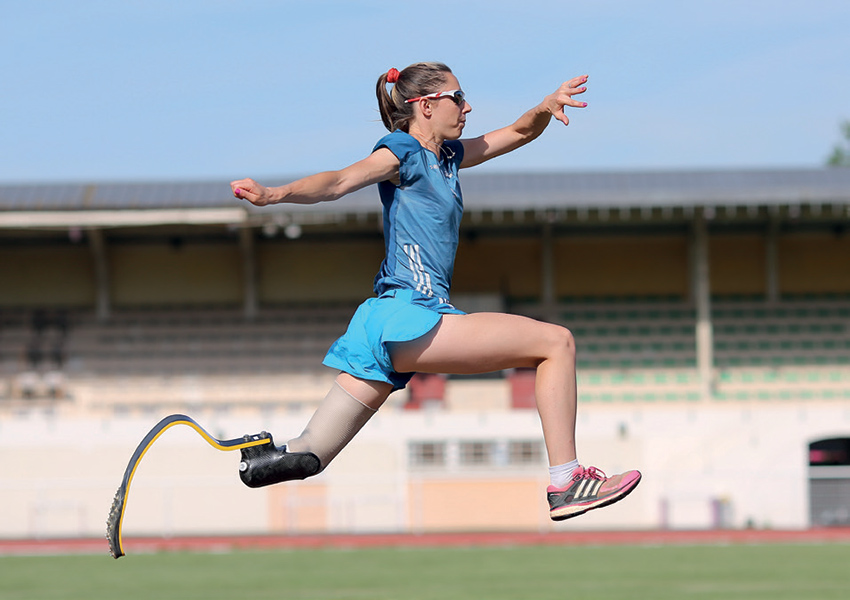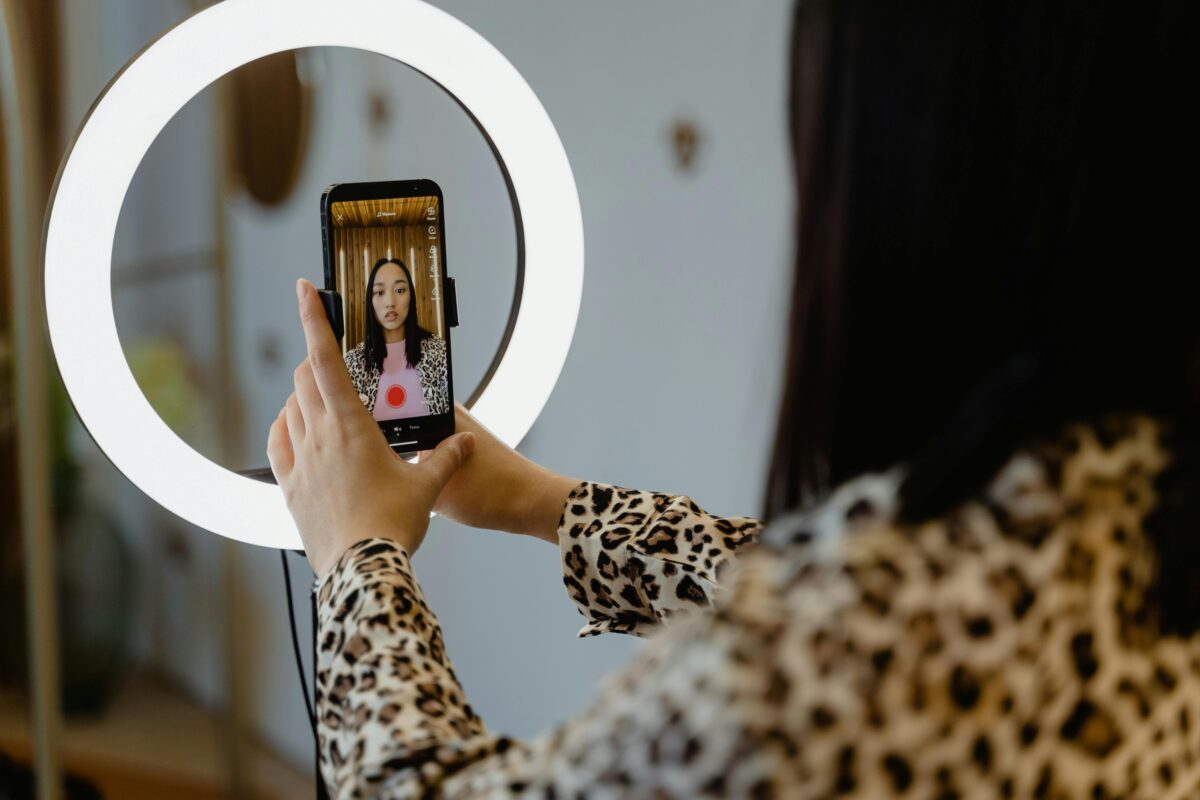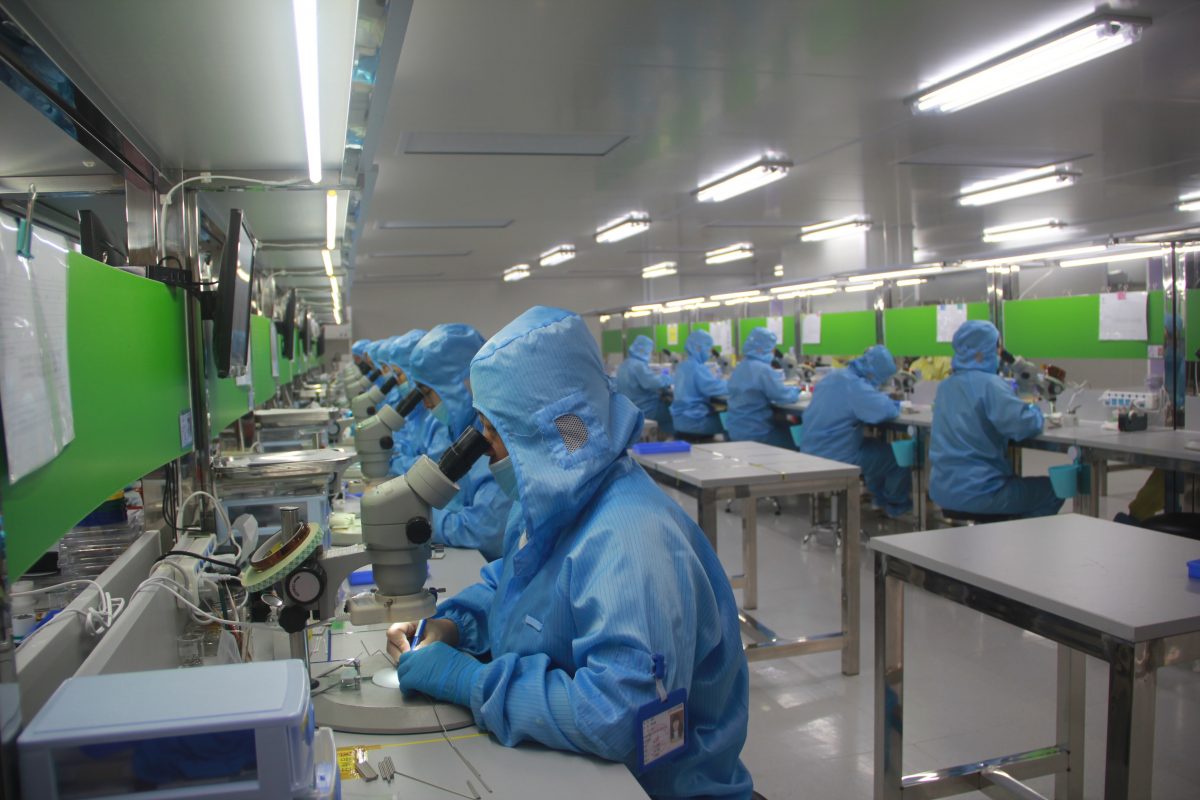At the dawn of her shining thirties, Marie-Amélie Le Fur, athlete, has already got an enviable track record! Encounter with a triple paralympic champion for whom the variety of intelligence is a fundamental resource and whose unparalleled background is one of life’s lessons!
Jérôme Buisson. In 1983, the studies of the American psychologist, Howard Gardner, enabled us to identify new forms of intelligence: linguistic, logic-mathematic, interpersonal… this new theory was disturbing but allowed us to understand how top-level athletes develop specific types of intelligence based on their respective disciplines: intrapersonal, physical, spatial… in your opinion, which types of intelligence do we use when we start athletics at 6 years old?
Marie-Amélie Le Fur. I only started athletics because my older sister didn’t want to do it on her own! My parents then started encouraging me and I started enjoying it, enjoying the physical and psychological advantages that it gave me. What I liked the most, right from the start, were the strong social connections I made with those with whom I trained. Of course, I also got on well with my school friends but when you share a passion for “surpassing yourself”, it undoubtedly helped me develop a form of interpersonal intelligence. It is this curiosity about others which is still the main focus of my life.
J.B. For a top-level athlete, is “surpassing oneself” a way of getting to know yourself better?
M.-A. L F. More than that, it is the manner in which we discover how intrapersonal intelligence works. Knowing oneself, when you are a top-level athlete, is constantly questioning your basic principles. For me personally, I have always practised sport with a view to meeting a performance target. To succeed, I establish a clearly defined plan, costed out and with a specific timeline which I use to back up my target. I then share this plan with the club or my family and friends who can then help me better understand when, if, I fail. Everything I learn in order to meet a target is another string in my bow whatever the final result. This does not exclude being competitive which is intrinsic to my sporting activity. Having said that, it is never a competition against others but rather a way to check my own situation! It is like an overview in which sensitivity also has an important position. I like athletics because I quickly became very successful at it. It’s a virtuous system: you enjoy practising it, you give and receive in return and that encourages you to push yourself even further!
The more an athlete questions the importance of performance, failure or competition for him or herself, the more he or she will get to know him or herself. It is based on this information that the intrapersonal intelligence of the athlete develops enabling him or her to push on further. At the start of my career, I was good at 800 or 1000 meter events, but since my accident in 2004, I have had to develop other skills. It has been hard work but thanks to sport, I had the necessary tools to reinvent myself.
J.B. So sport is one of the structural elements of your intrapersonal intelligence?
M.-A. L F. When I had the accident in which I lost part of my left leg, sport enabled me to give myself a positive aim and tell myself “I want to run again!” As a result, I slowly pulled myself out of a negative spiral and 4 months later, I started training again. From that moment onwards, sport became a driver which allowed me to move forward in a new context, that of being handicapped. It gave me confidence because I realised that people weren’t looking at me because I had a prosthetic leg but because I had a prosthetic blade! This knowledge allowed me to be more accepting of the way society viewed my handicap. In fact, this is one my ongoing battles. In other words, the determining factors of sport are fundamental for the construction of my personality, my life achievements and my day-to-day. This became obvious to me when I had my accident. Sport helped me to rebuild myself by giving me an aim, momentum and confidence. Sport was also the bridge between my new life and my previous life, a way of letting me know that not everything had changed and that there was still a part of me which was the same person as before.
J.B. Did the accident help you to develop your physical intelligence differently?
M.-A. L F. I didn’t really have a choice because I had to change my sporting discipline! As middle distance events did not exist in the Paralympic context, I had to focus on disciplines which I knew less well, such as long jump. The most unsettling aspect was to learn to manage the prosthetic limb which I needed to use for running. I had to work extremely hard to learn and master new skills. For example, I had to learn how to differentiate between my two legs when I ran, as a foot works differently from a prosthetic limb. The two legs do not necessarily require the same cycle to produce the desired result, but it takes years of training to make something which doesn’t come naturally, automatic. The idea is that you have a drawing cycle for the able leg, whereas, for the prosthetic limb, you are aiming to press down on it to deform it so that it collects the energy and gives it back, all while trying to ensure a smooth and regular running pattern so as to avoid asymmetry or dorsal impact.
J.B. How would you define your spatial awareness since the accident? How is the relationship with time different when you are top-level athlete?
M.-A. L F. It is not my spatial awareness which has changed but rather my awareness of my body “within” space. Not only does the handicap change the way you interact with your environment, but it changes your motor pattern.
Sport obviously helped me better understand my own pattern, to help it evolve quickly and start producing results again. Physical intelligence is like all the other forms of intelligence: the more you practice, the more it develops. And the human body’s resources are incredible. Time-based intelligence is definitely developed when you are a top-level athlete as our careers are so short! It is a veritable race against the clock, fractioned by deadlines every 4 years. Our performance tends to peak between ages 25 and 30 and it is at that time that you need to be your best. Once you have gone past this peak, it is more and more difficult to develop your skills. On the other hand, it’s a worthy challenge! The more time goes by, the more one must find new determining factors to push the body to achieve more, new sources of inspiration, new ways of enjoying it. Time-based intelligence is knowing how to articulate this information around the sometimes worrying feeling that you are not going far enough and fast enough! All top-level athletes are like this – perfectionists! We always want to do more, to go further, to beat records. That is why I always say that a satisfied athlete is an athlete who should retire!
J.B. How do you reconcile your private, sporting and professional lives which all use different forms of intelligence?
M.-A. L F. Each aspect of my life uses different types of intelligence. It works for me that way and it allows me to move forward with my life plans. Everything that athletics, my family and my job bring me, emotionally, psychologically, in my relationships with others and myself, is as complementary as the different forms of intelligence! It is also for that reason that sport has always helped me manage my private and professional lives.
J.B. So the different forms of intelligence and the numerous resources resulting therefrom are complementary! Does this explain how athletics, which is not a team sport, can develop such a keen interest in others in a young 6-year-old girl?
M.-A. L F. Maybe! For years, I have been engaging with children who are the managers, the entrepreneurs and citizens of tomorrow to change society’s view of handicaps. To remove the taboo and the fear associated with handicaps and to show them the strength in being different! Today, thanks to my mission within the French Paralympic and Sporting Committee, I can act differently and develop toplevel para-sporting disciplines to ensure that “physical activity for everyone” also applies to those with a handicap. There is a public desire to achieve this but employment and accommodation issues are already so complex that access to sport is very low on the list of priorities. And yet sport helps develop those essential skills which enable you to comfortably manage your social and professional lives. France still has a lot of work to do in this respect and changing mentalities takes time. Therefore, I use all my resources to help others understand that people with handicaps are just as successful as able-bodied people when it comes to helping society evolve, they just need to be given their rightful place. This is an adventure which mobilises all forms of intelligence!
Interview by Jérôme Buisson




